Economy before British Rule
To understand the present level of the Indian economy, it is important to understand the economic system of India during the British rule and post-independence economic development policies.
-
Before the advent of British rule, India had an independent economy. It was largely primary sector economy and the major occupations were agriculture, handicrafts, and many other primary sector works.
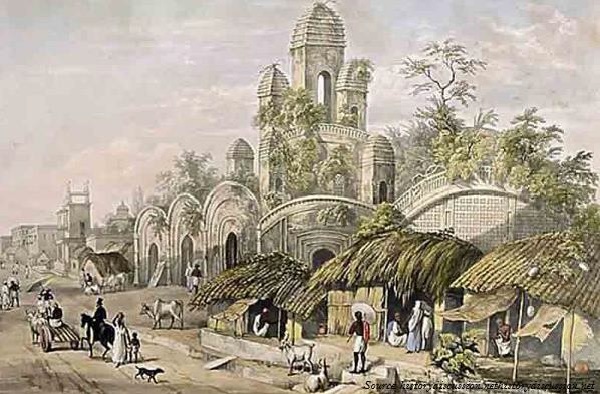
-
The economy was full of resources and a prosperous one. Therefore, high quality agricultural products and handicrafts made by the Indians were traded across the world.
Before the advent of British rule, India had an independent economy. It was largely primary sector economy and the major occupations were agriculture, handicrafts, and many other primary sector works.
The economy was full of resources and a prosperous one. Therefore, high quality agricultural products and handicrafts made by the Indians were traded across the world.
Economy during British Rule
-
During the British rule, India’s economy became a net raw material supplier and a net importer of finished products.
-
No British economist attempted to measure the per capita income and national income of India.
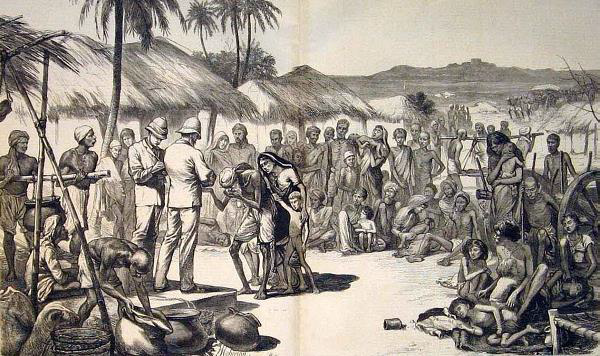
-
Some of the Indian economists Dadabhai Naoroji, V.K.R.V. Rao, R.C. Desai and British Findlay Shirras and William Digby attempted to measure India’s national income. Among all, V.K.R.V. Rao was the most successful.
-
Before independence, India’s economy was solely dependent upon agriculture.
-
85 percent of the Indian population were rural and their main source of subsistence was agriculture.
-
During the British colonial period, agriculture (in spite of being the main occupation) was suffering from many problems and hence the effective growth was zero percent.
-
Land settlement system was totally in favour of the British.
-
Agricultural system was stagnant; however, later there was a gradual growth, but that was not because of improvement and development of the agricultural system, but because of the expansion of agricultural land.
During the British rule, India’s economy became a net raw material supplier and a net importer of finished products.
No British economist attempted to measure the per capita income and national income of India.
Some of the Indian economists Dadabhai Naoroji, V.K.R.V. Rao, R.C. Desai and British Findlay Shirras and William Digby attempted to measure India’s national income. Among all, V.K.R.V. Rao was the most successful.
Before independence, India’s economy was solely dependent upon agriculture.
85 percent of the Indian population were rural and their main source of subsistence was agriculture.
During the British colonial period, agriculture (in spite of being the main occupation) was suffering from many problems and hence the effective growth was zero percent.
Land settlement system was totally in favour of the British.
Agricultural system was stagnant; however, later there was a gradual growth, but that was not because of improvement and development of the agricultural system, but because of the expansion of agricultural land.
Zamindari System
-
Many parts of India (especially Bengal region of east India, today’s West Bengal and Bangladesh) were practising Zamindari system (Land-lordship).
-
The main work of the Zamindars was to collect the land tax/rent. They almost did nothing either to improve the agriculture system or the conditions of the farmers.
-
Zamindars’ inhumane attitude affected farmers’ lives very badly. Most of the regions of the country were facing famine and many other social issues and problems.
-
Some of the regions, during the Zamindari system, evidenced growth that was only because of the commercialisation of agriculture. In these regions, the farmers had been forced to produce cash crops instead of staple food crops.
Many parts of India (especially Bengal region of east India, today’s West Bengal and Bangladesh) were practising Zamindari system (Land-lordship).
The main work of the Zamindars was to collect the land tax/rent. They almost did nothing either to improve the agriculture system or the conditions of the farmers.
Zamindars’ inhumane attitude affected farmers’ lives very badly. Most of the regions of the country were facing famine and many other social issues and problems.
Some of the regions, during the Zamindari system, evidenced growth that was only because of the commercialisation of agriculture. In these regions, the farmers had been forced to produce cash crops instead of staple food crops.
Major Problems
-
The major problems were −
- Drought,
- Flood,
- Poor irrigation system,
- Desalination of soil,
- Absence of technology, and
- Poverty.
-
India did not undergo any industrialisation as all the raw materials were exported to the UK.
-
Handicrafts and other small-scale industries suffered badly.
-
The main intention of British rule was to make India, a market of their finished products.
-
In India, many industries developed even in the time of crisis. For example, the jute industry in West Bengal and the cotton textile industry in regions of Gujarat and Maharashtra.
The major problems were −
- Drought,
- Flood,
- Poor irrigation system,
- Desalination of soil,
- Absence of technology, and
- Poverty.
India did not undergo any industrialisation as all the raw materials were exported to the UK.
Handicrafts and other small-scale industries suffered badly.
The main intention of British rule was to make India, a market of their finished products.
In India, many industries developed even in the time of crisis. For example, the jute industry in West Bengal and the cotton textile industry in regions of Gujarat and Maharashtra.
The Industries
-
Tata Iron and Steel Company (TISCO) was incorporated in the year 1907.
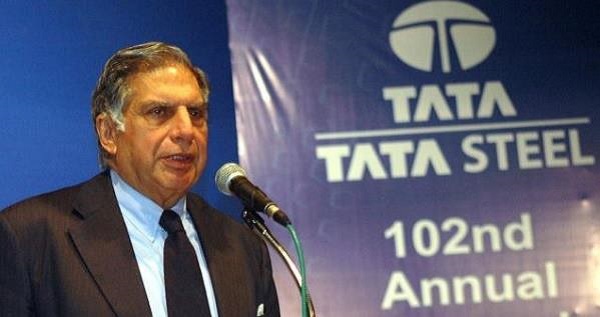
-
By the middle of the 20th century, some other industries such as cement, sugar, paper, etc. were established.
-
As all the above discussed industries were concentrated in some specific pockets of the country; therefore, there was no improvement in the condition of the farmers.
-
During the colonial period, India became the exporter of jute, cotton, sugar, indigo, wool, etc. and importer of finished products such as cotton and silk fabrics, woollen cloth, machinery, and other items.
-
More than 50 percent of India’s trade was directed to Britain; remaining 50 percent were traded in other countries including China, Sri Lanka, and Persia (Iran).
-
‘Muslin’ is a type of cotton textile which originated in Bengal, particularly, places in and around Dhaka (previously Dacca), now the capital city of Bangladesh. Hence, it was also popular as ‘Daccai Muslin’.
-
Because of its quality, Muslin earned popularity across the world. Sometimes, foreign travelers also used to refer to it as malmal shahi or malmal khas implying that it was worn by, or fit for, the royalty .
The following image shows the dress made up of Muslin (the dress worn by the lady) and inset (image) shows the Muslin fabrics.
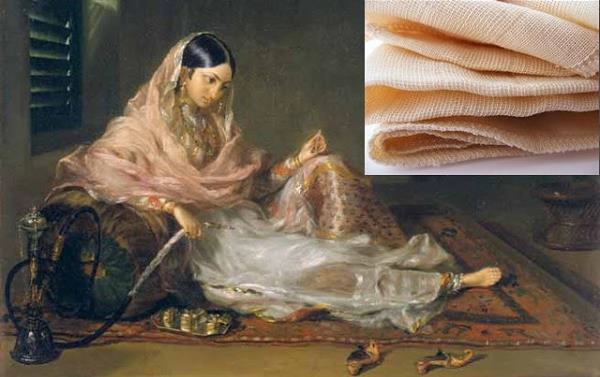
Tata Iron and Steel Company (TISCO) was incorporated in the year 1907.
By the middle of the 20th century, some other industries such as cement, sugar, paper, etc. were established.
As all the above discussed industries were concentrated in some specific pockets of the country; therefore, there was no improvement in the condition of the farmers.
During the colonial period, India became the exporter of jute, cotton, sugar, indigo, wool, etc. and importer of finished products such as cotton and silk fabrics, woollen cloth, machinery, and other items.
More than 50 percent of India’s trade was directed to Britain; remaining 50 percent were traded in other countries including China, Sri Lanka, and Persia (Iran).
‘Muslin’ is a type of cotton textile which originated in Bengal, particularly, places in and around Dhaka (previously Dacca), now the capital city of Bangladesh. Hence, it was also popular as ‘Daccai Muslin’.
Because of its quality, Muslin earned popularity across the world. Sometimes, foreign travelers also used to refer to it as malmal shahi or malmal khas implying that it was worn by, or fit for, the royalty .
Other Facts
-
The surplus income of India was used in setting up the official infrastructure for the British officers.
-
During the British period, some of the infrastructure such as road, rail, telegraph, ports, water transport, etc. were developed, but all these were developed not for the benefit of Indians, but, rather to serve the interests of British officials.
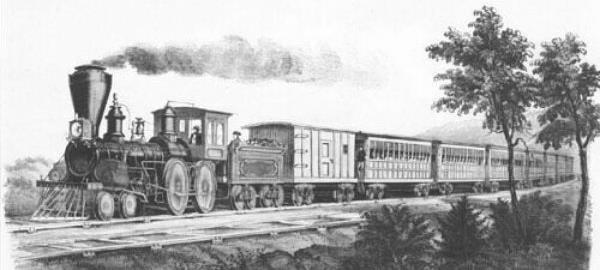
-
The railway, which was developed in the 1850s broke the barrier of long distance travel and trade. It also fostered the commercialisation of Indian agriculture. But this could hardly be of any help to the farmers.
-
The regional disparity was high, as the Madras Presidency (entire South India) was more into manufacturing and services sector and rest of India was in the agricultural sector.
The surplus income of India was used in setting up the official infrastructure for the British officers.
During the British period, some of the infrastructure such as road, rail, telegraph, ports, water transport, etc. were developed, but all these were developed not for the benefit of Indians, but, rather to serve the interests of British officials.
The railway, which was developed in the 1850s broke the barrier of long distance travel and trade. It also fostered the commercialisation of Indian agriculture. But this could hardly be of any help to the farmers.
The regional disparity was high, as the Madras Presidency (entire South India) was more into manufacturing and services sector and rest of India was in the agricultural sector.
No comments:
Post a Comment